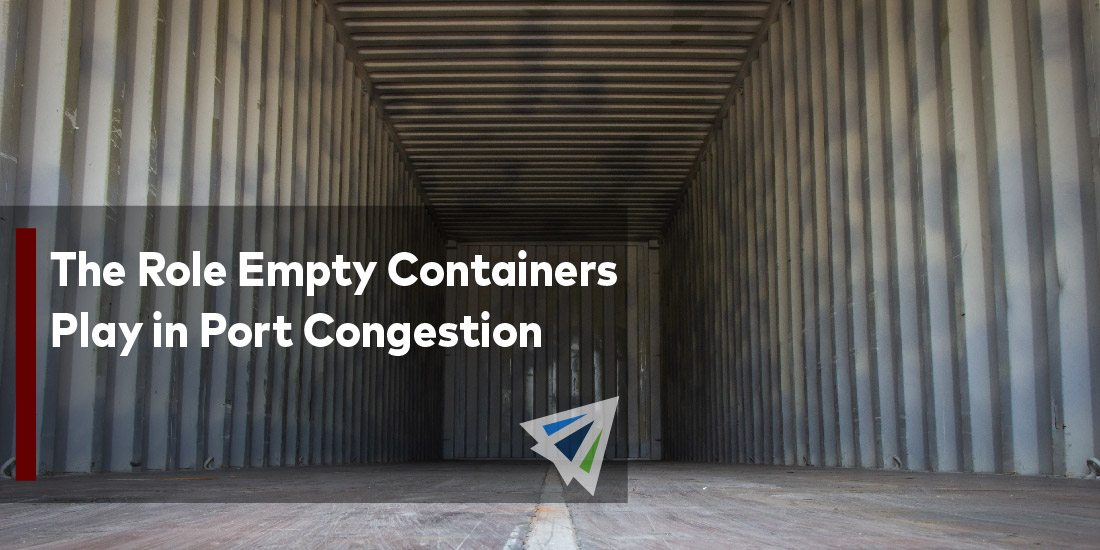The Role Empty Containers Play in Port Congestion
Over the last couple of years, ocean ports, airports, and the shipping industry at large has come under the spotlight of the media. The effects of the pandemic threw so many industries into panic mode as producers struggled to keep up with demand. But much of the impact wasn’t the responsibility of buyers and sellers alone. The international shipping industry has caused a majority of the bottlenecks that businesses around the world are facing.
Port congestion has made its way into the headline of nearly every shipping blog post over the last couple of years, and for good reason. Ports have been experiencing grid locks like never before with record breaking queues of ships waiting offshore at anchor at most ports (the southern Californian ports being the worst).
But the congestion isn’t just due to high volumes of cargo coming through. They are also due to issues with the efficient movement of empty containers into and out of port grounds. When empty containers pile up, they create problems both in port ground movement, vessel availability, and equipment availability, contributing further to the already extreme congestion. Here’s how:
How Empty Containers Contribute to Port Congestion
There are two major ways that empty containers contribute to port congestion. Firstly, empty containers create issues with terminal and yard space. Yard space that is otherwise allocated to new containers is occupied by piles of empty containers. This makes it incredibly difficult for port workers to keep new cargo moving efficiently through port grounds and terminals. In return: containers move slower across the port to their respective destinations; it reduces the efficiency of unloading vessels as port workers struggle to find space for new containers; and it further gums up port operations as workers are forced to use all available yard space to stack containers.
Secondly, empty containers cause congestion issues by reducing the available chassis supply. Sometimes, port workers have no choice but to store empty containers on chassis, which reduces the availability of an already scarce piece of equipment. Chassis that should otherwise be dedicated to the movement of loaded containers are left holding empties with no immediate plan to free up the equipment.
Truckers Not Eager to Solve the Problem
No problem is free to fix, and when you’re tackling an issue as large as the empty container crisis, the cost and time necessary to fix it is astronomical. Drayage costs are already surging due to the low trucking labor force and increased fuel costs. Even of the available truckers, many are leaving drayage work due to the stress and complexity of picking up and dropping off loaded containers in congested ports. On top of this all, to fix the empty container crisis, truckers would have to take several additional trips to and from ports and warehouses which would cost money, time, and cause for longer dwell times of loaded containers that need to be moved.
At this point, it’s a bit of a waiting game. Some carriers are sending vessels to specific ports to pick up extra empties, but it’s expected that the congestion relief of empty containers will be a slow process. Ocean ports and truckers simply don’t have the capacity and labor to tackle the empty container crisis head on.
Looking Ahead
If you’re interested in starting a conversation like this, please don’t hesitate to contact one of our team members! We would love to hear about your current shipping processes and help devise a strategic approach to reducing your shipping costs and increasing your company’s efficiency. In addition, we have our weekly market updates that provide relevant freight news, updates, and developments across the industry.
